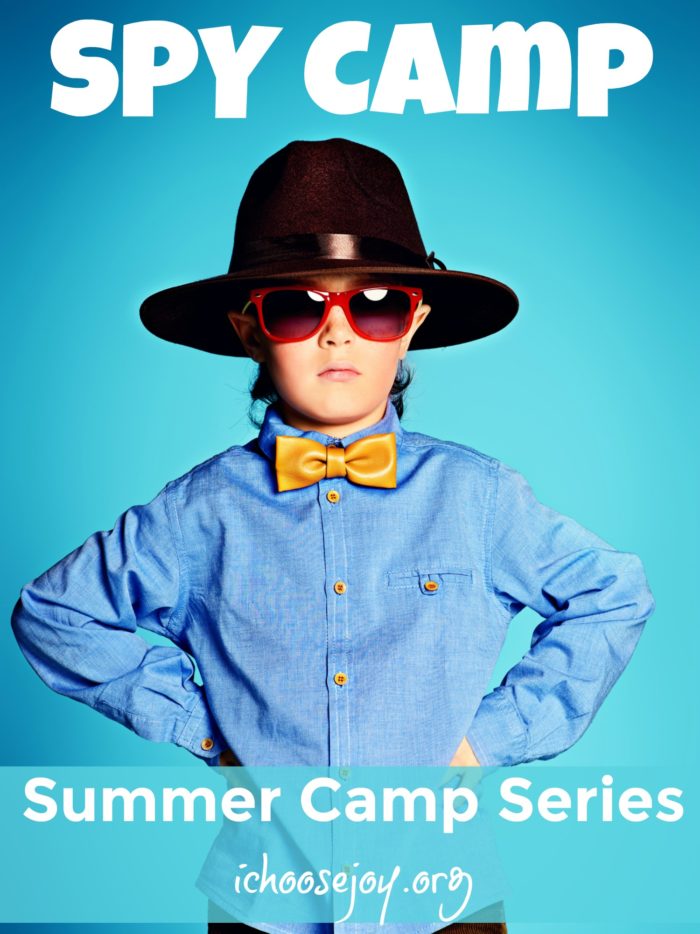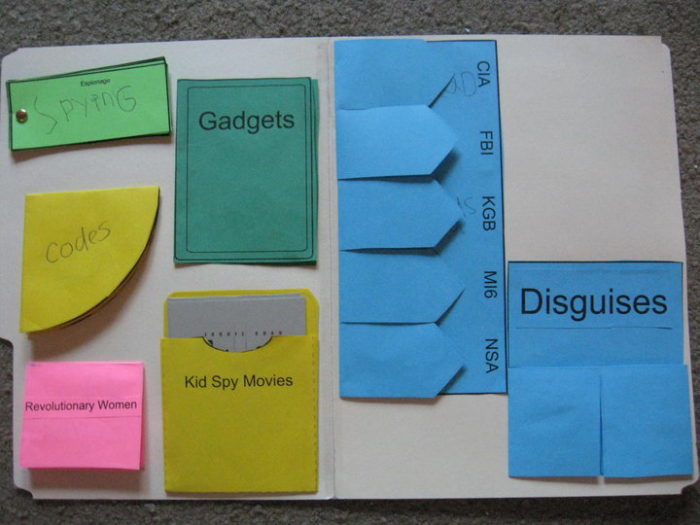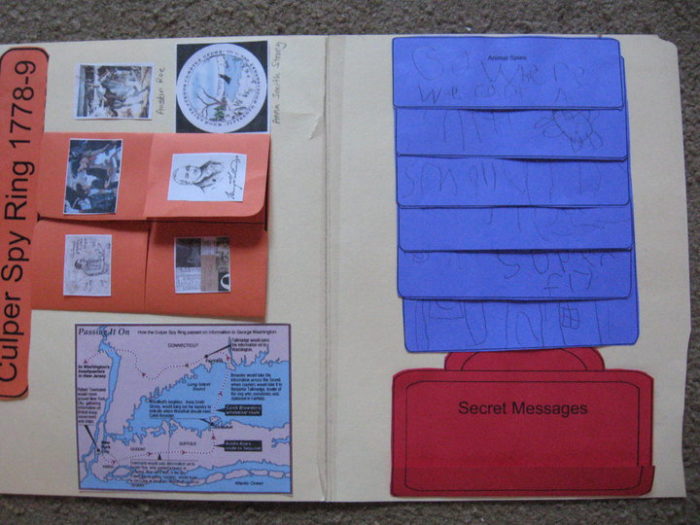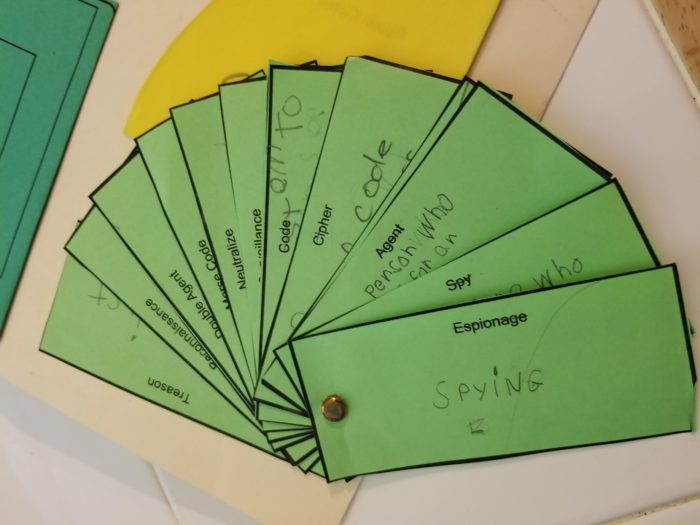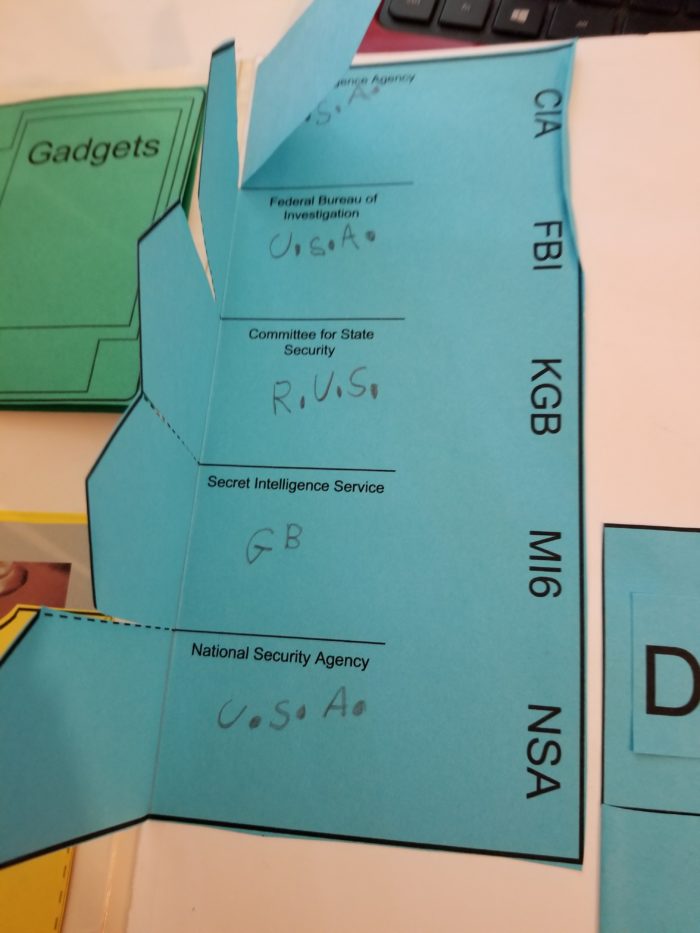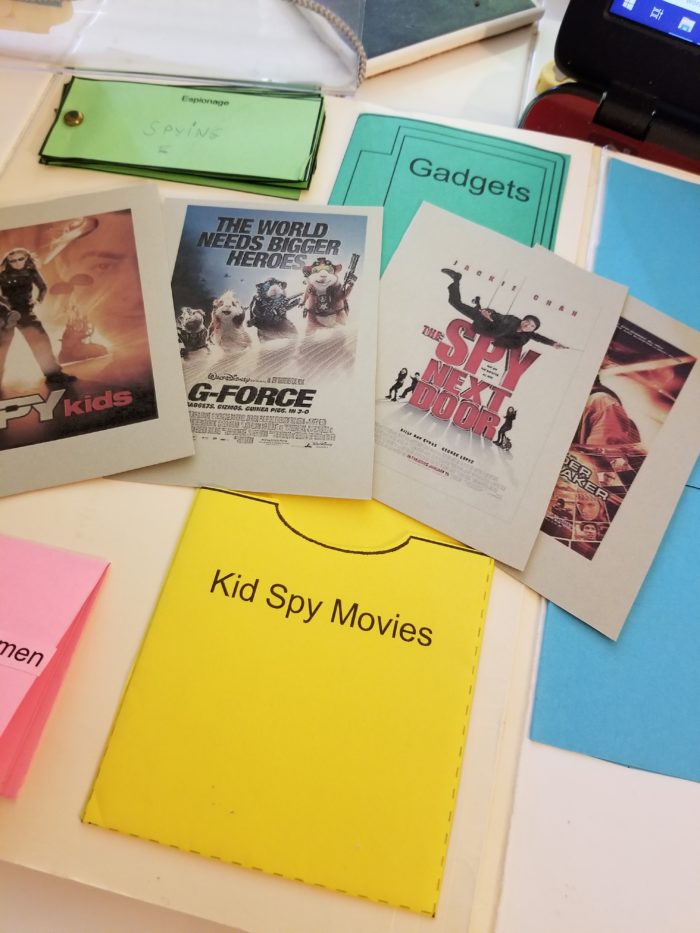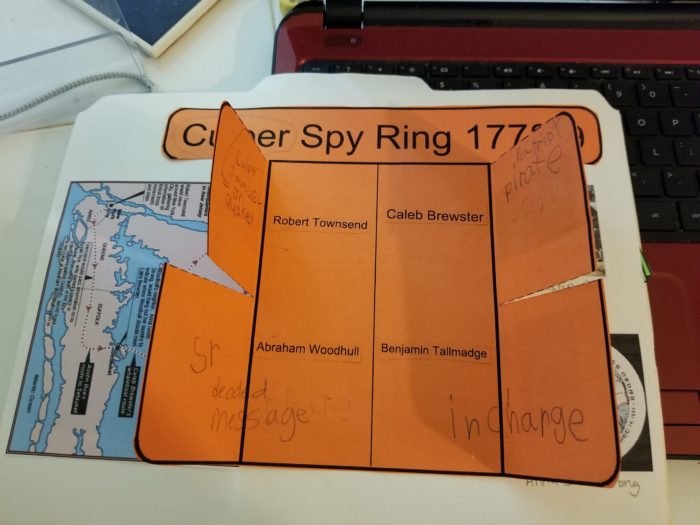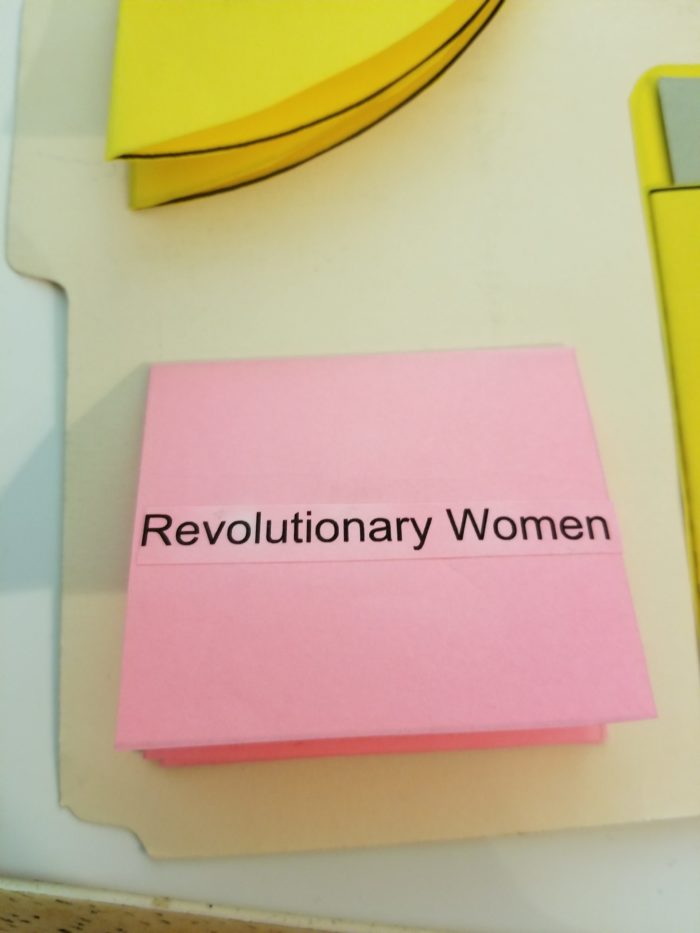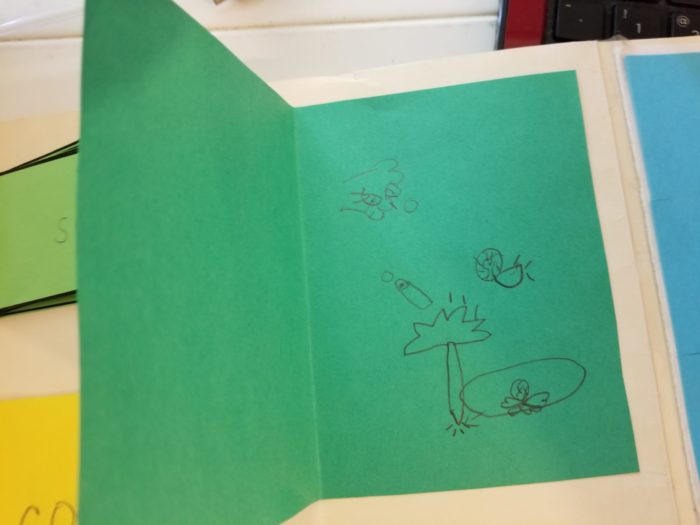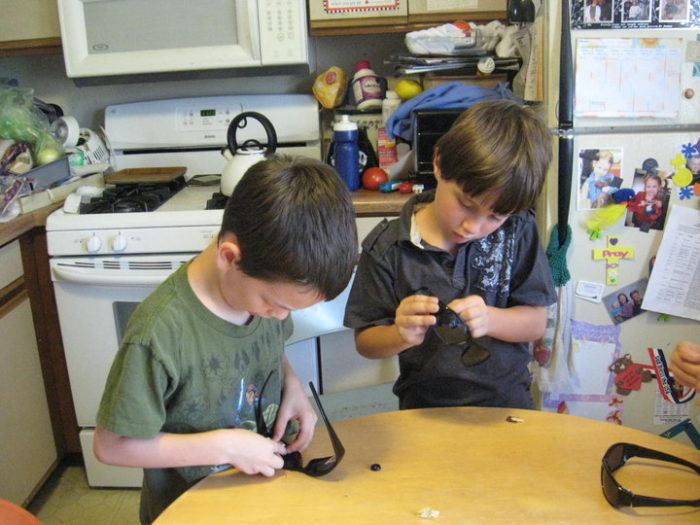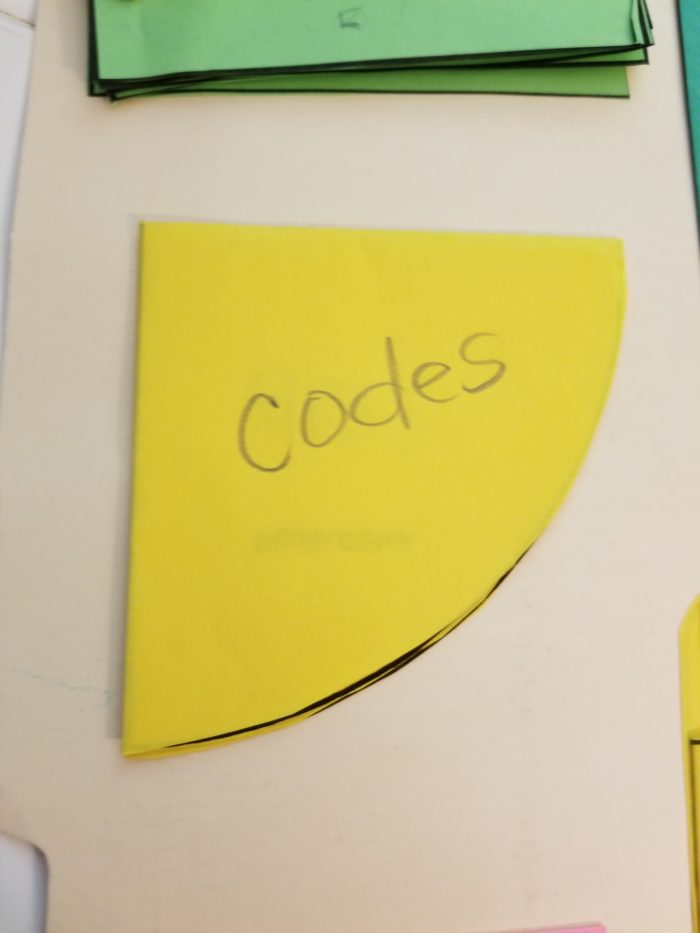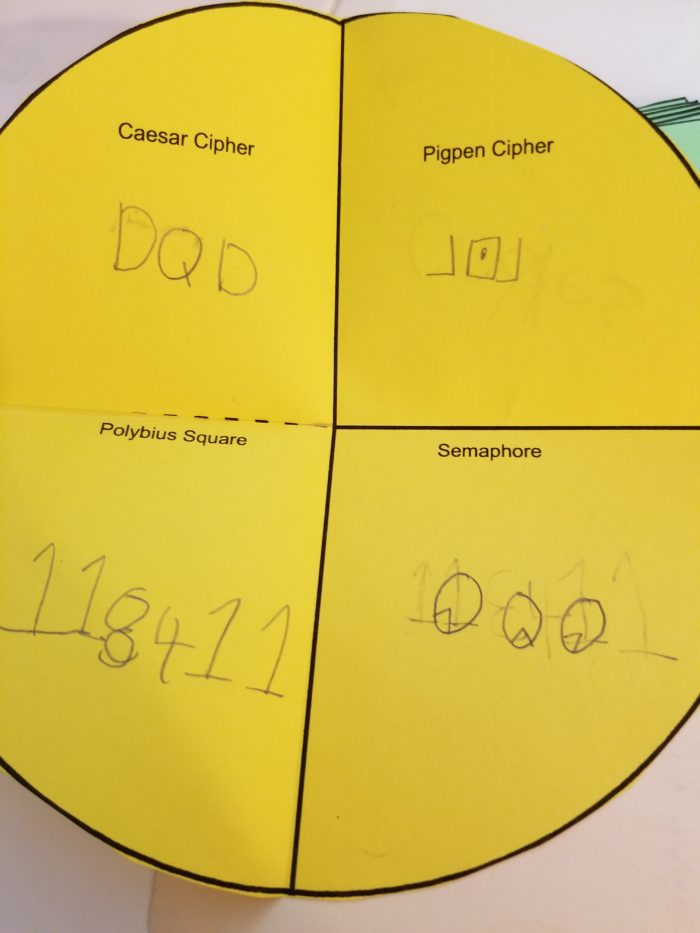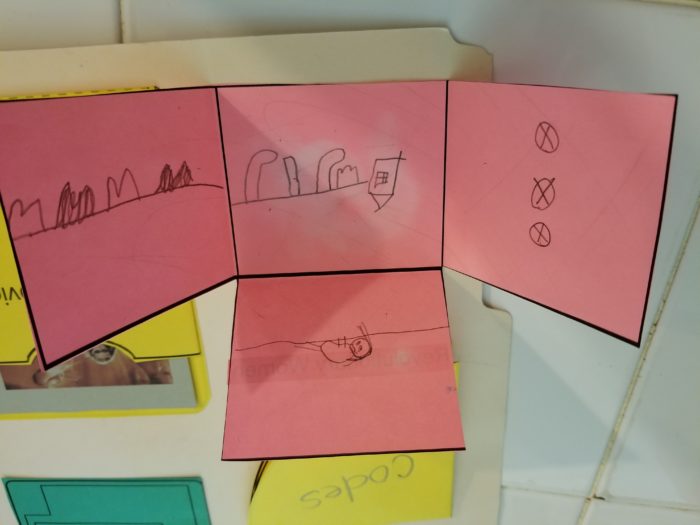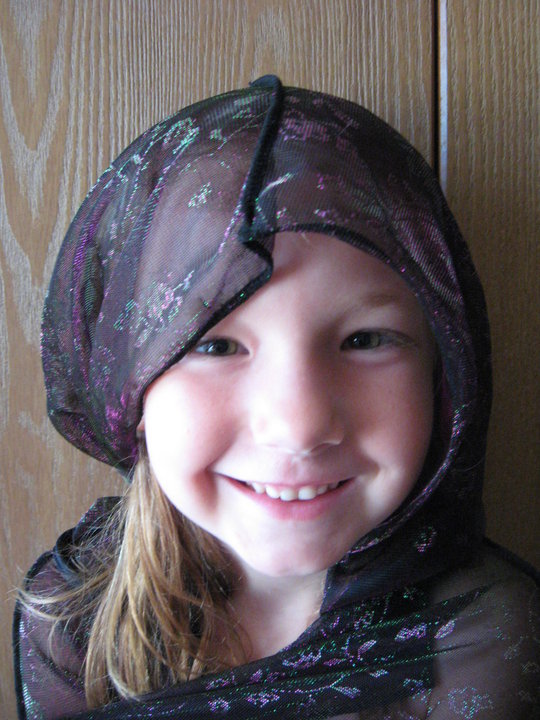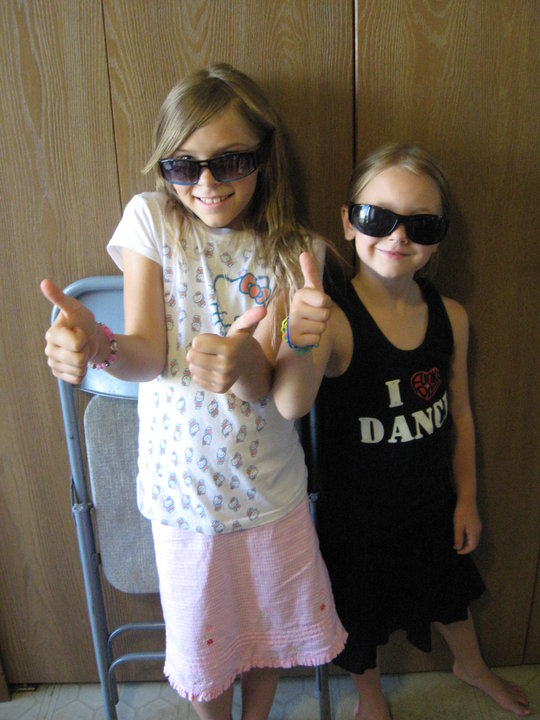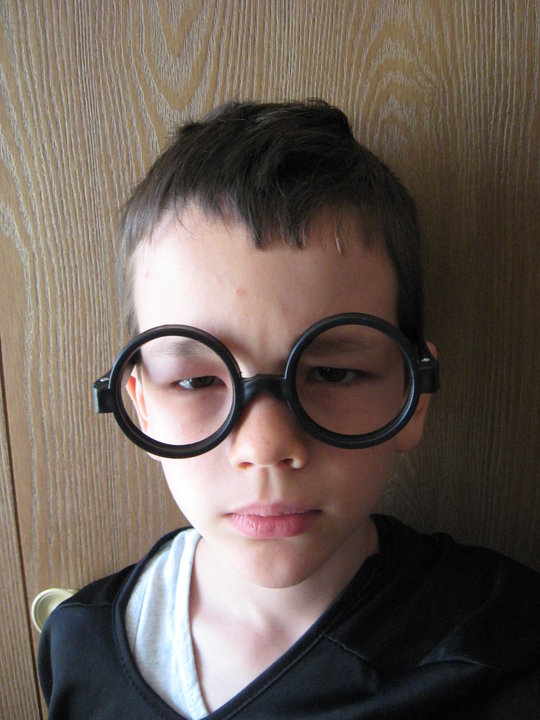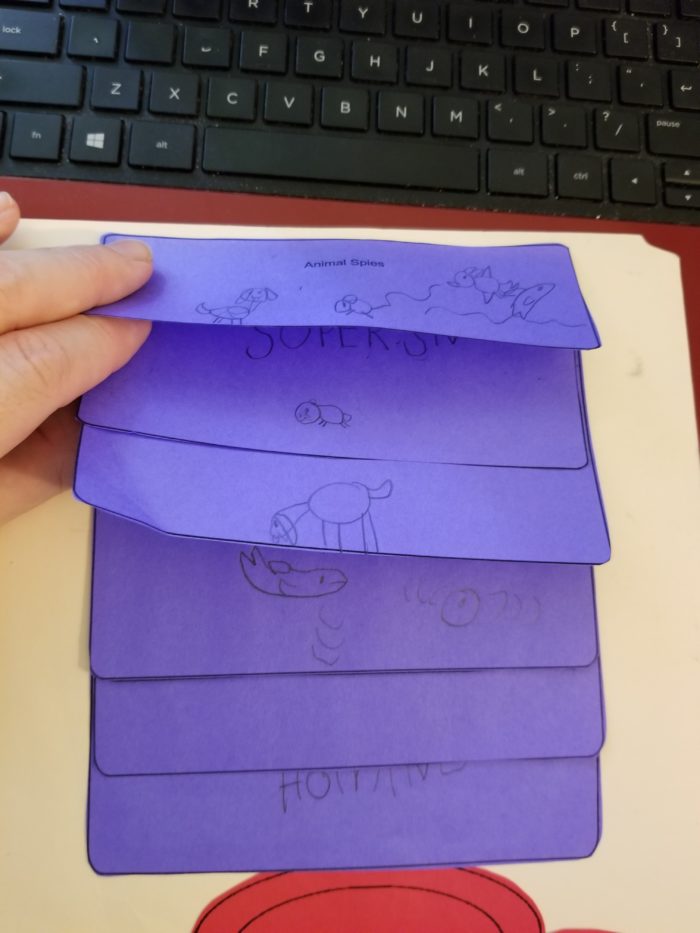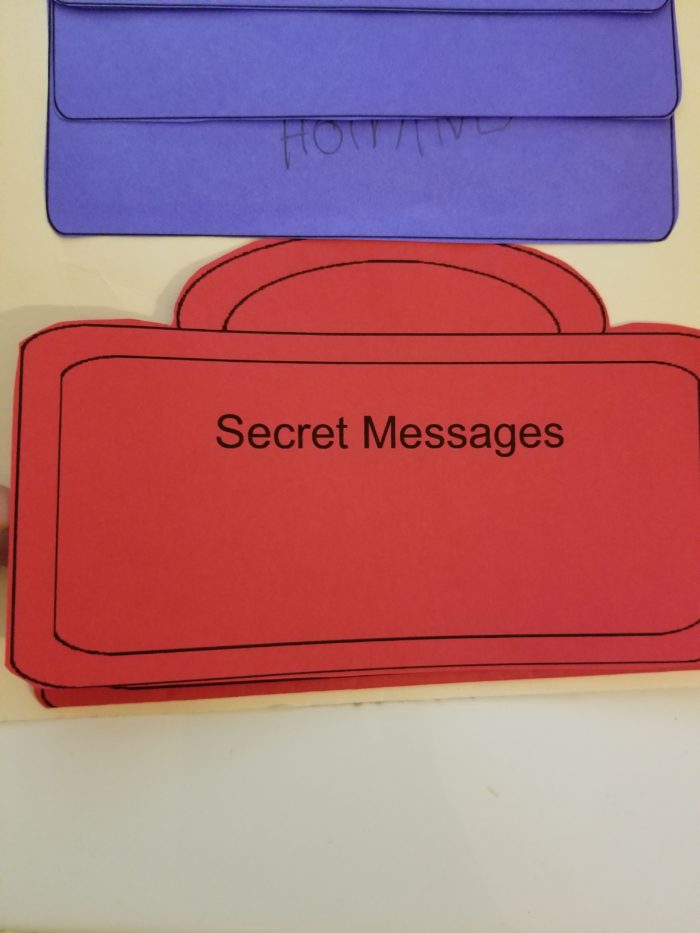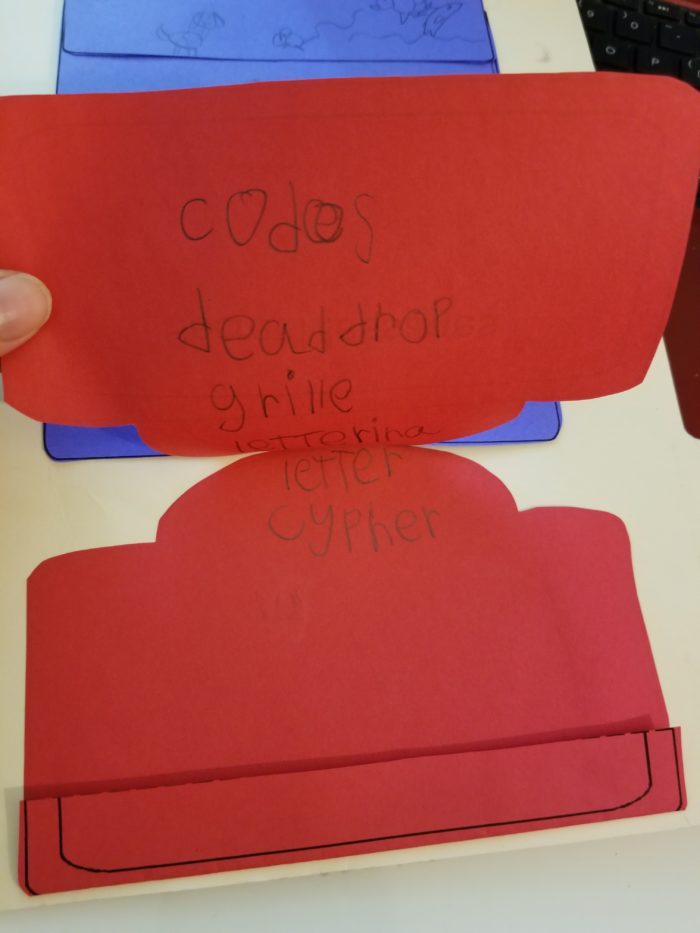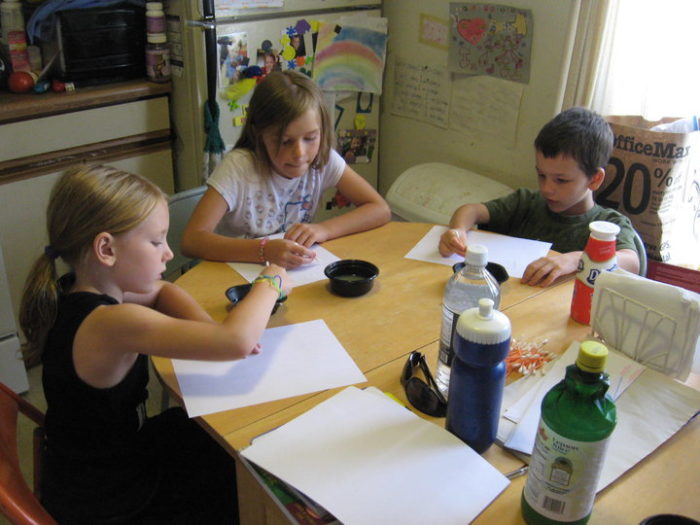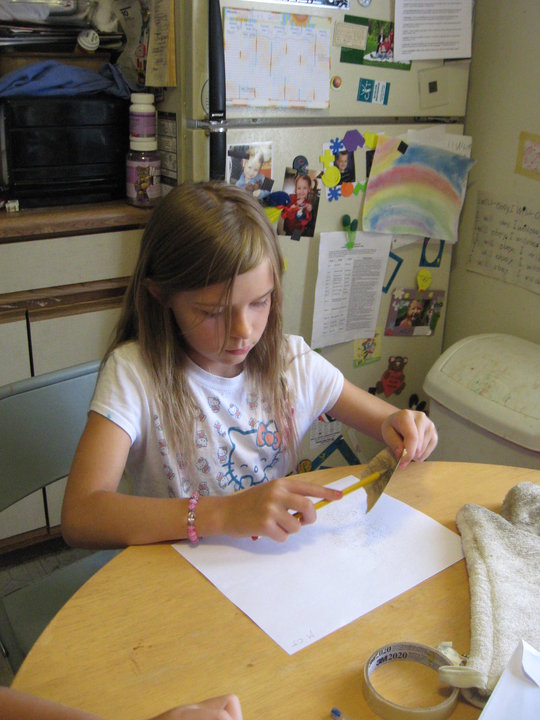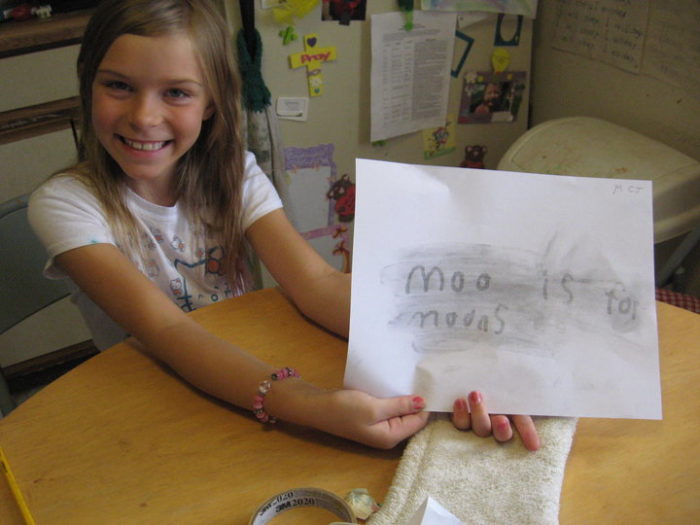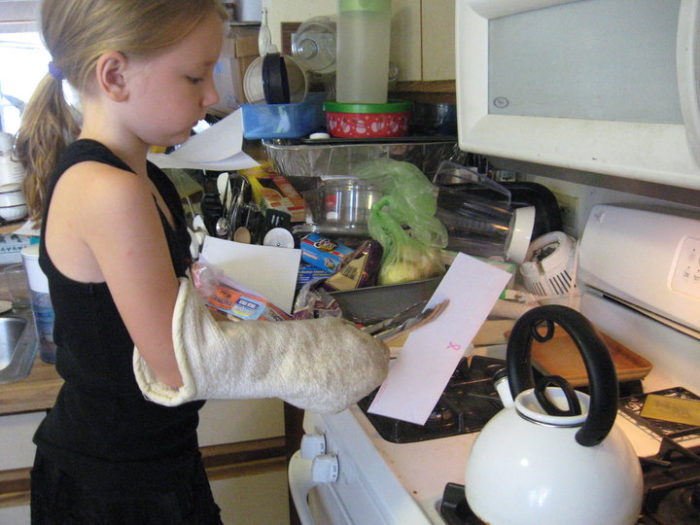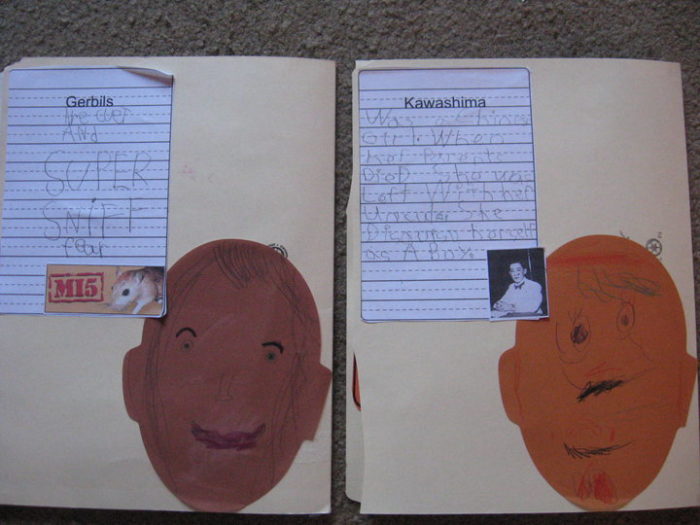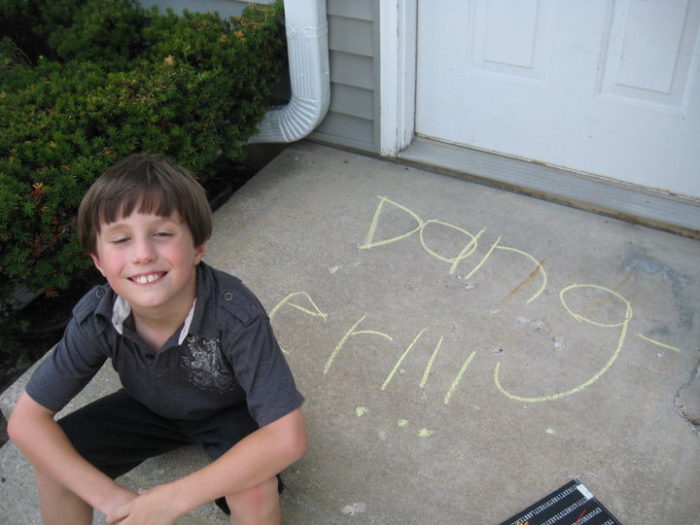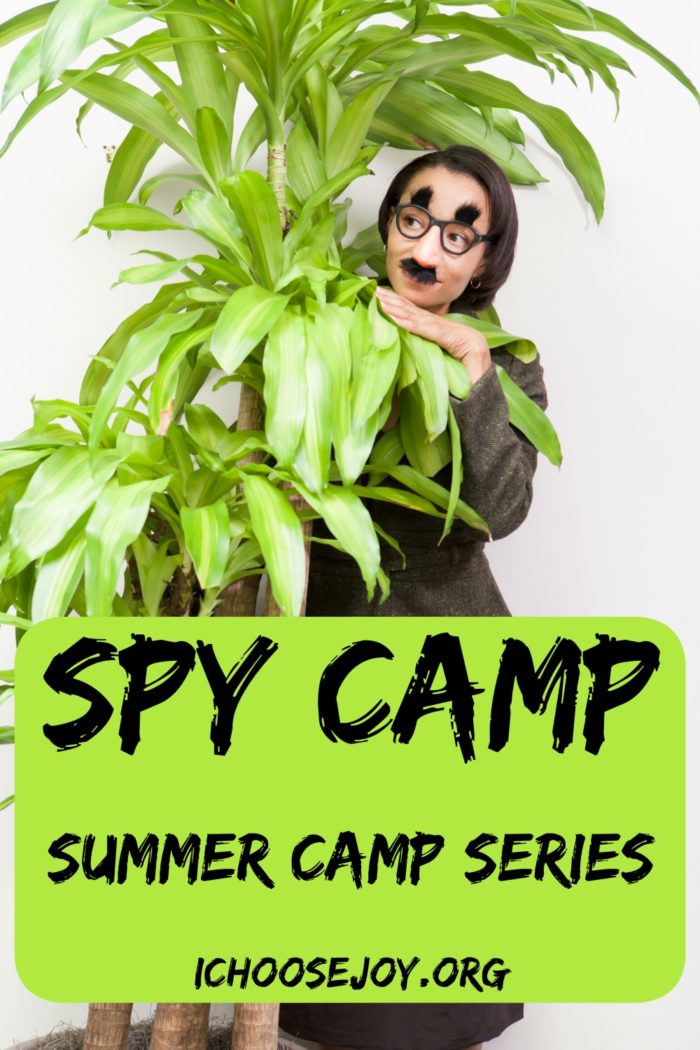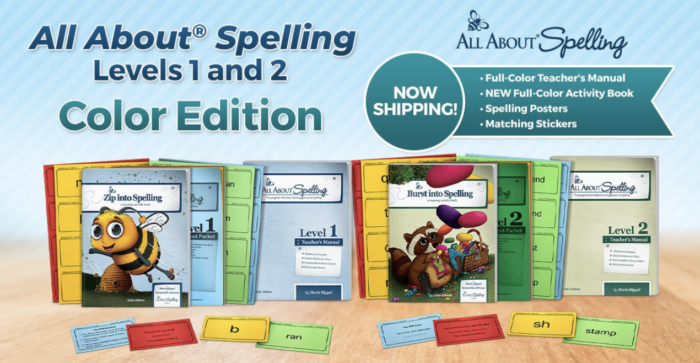Spy Camp: Summer Camp Series
[Today’s post Spy Camp: Summer Camp Series was written by guest author Michelle Habrych.]
My kids have always been fascinated by spies. Movies make them look so cool, with all of their gadgets and adventures. I decided one summer to take a week to host spy camp in which my kids and their friends studied real spies. We also did some fun hands-on activities and watched some cool videos about spies. Here’s how you can host a spy camp of your own.
Each spy (camper) made his or her own handbook, which is a file folder lapbook to keep the information we studied in one place (or you could just use notebooks). If you’re new to lapbooks, there are plenty of resources for printing booklets for lapbooks. We created many of our own from the blank lapbook template sold by In the Hands of a Child but you can use free printable lapbook templates here if you prefer. If you want to create a multi-file lapbook, check out this page. Scroll down to the directions which say “Creating a lapbook base.” Ours is just the basic file folder with one flap taped in the middle, but you could do it any way you wish.
Disclosure: I get commissions for purchases made through affiliate links in this post.
The Cover for your Spy Camp “Spy Handbook”
We created the covers last actually. After we had studied everything, I let the spies choose photos to put on their covers. I downloaded the photos from various internet sources. Then I put them in a Word document, typed the spy’s name, and printed it out. Easy peasy, yet it looks really cool, especially if you use a fun font.
SCROLL TO THE BOTTOM FOR A FREE SUMMER CAMP PLANNING GUIDE!
Project ideas:
Basic Spy Vocabulary
Start by explaining some basic spy vocabulary. We used a fan booklet, with the pages attached by a brass fastener.
Here are the words we defined:
- Espionage
- Spy
- Agent
- Bug
- Cipher
- Code
- Dead Drop
- Surveillance
- Neutralize
- Morse Code
- Double Agent
- Mole
- Reconnaissance
- Treason.
I believe I found my simple definitions in a book from the library, but since this was ten years ago, I don’t recall which one. It was likely this one: DK Eyewitness Spy by Richard Platt. This website has even more words and definitions also these here and here. Feel free to add more words to your booklet as your kids show interest.
Spy Agencies
Next we made a flap booklet to list the differences between the famous spy agencies around the world:
- CIA
- FBI
- KGB (now FSB)
- MI6
- NSA.
My kids were younger so they did not write as much in these booklets but at least have what the letters stand for and which country the organization is located in. I’d also make sure they understand the difference between FBI and CIA.
Spy Movies
We made a pocket for movie poster cards (printed the photos of movies featuring spies and geared toward youth, printed on cardstock).
The movies we did at that time were:
- Spy Kids
- G-Force
- The Spy Next Door
- Alex Rider: Stormbreaker.
Many more movies can be added here based on your kids’ preferences. (And, since our camp was 10 years ago, many new movies have been released as well).
American Revolutionary War and Spies
Historically, spies have been instrumental in helping win wars. When we did this camp, we learned about the Culper Spy Ring. Started by George Washington, this group was instrumental in helping Colonial troops through the Revolutionary War.
We made a shutter fold booklet with the title Culper Spy Ring 1778-9 and featuring these men:
- Robert Townsend
- Abraham Woodhull
- Caleb Brewster
- Benjamin Tallmadge.
We found illustrations online to print out and put on the flaps of the booklet. We also included images representing Austin Roe and Anna Smith Strong, and we printed out a map of the spy ring’s network.
This is a great video about the Culper Spy Ring.
Here are some sites about American history and spies
Women Spies of the Revolutionary War
While researching, I found a new book on Anna (Nancy Strong) called Anna Strong and the Revolutionary War Culper Spy Ring by Enigma Alberti. That might be fun to include. One book I remember using to help the kids understand the women’s spying role in the war is Redcoats and Petticoats by Katherine Kirkpatrick.
The kids made a booklet called Revolutionary Women. They drew pictures of how the women signaled the men in the spy network. It’s really fascinating!! This short video tells you some of the amazing things these ladies did for their country.
Spy Gadgets
Gadgets help a spy get the job done. We made a booklet in which the campers could write details about their favorite ones. Here are some you can see in videos from the International Spy Museum in Washington, D.C. The first video is a brief informational video about the museum, featuring a couple of items on exhibit.
This a video playlist of many items you can see on display at the museum. (There are 11 separate videos in this playlist.)
Pick and choose which videos your spies want to watch. The DK website has some information on spy cameras, listening devices, tools for breaking in, and places to hide information.
Ciphers and Codes
Knowing how to use ciphers and codes can be an important part of a spy’s job. The campers made a petal booklet to write down what they learned about these ciphers and codes:
- Caesar Cipher
- Pigpen Cipher
- Polybius Square
- Semaphore.
This blog, Gift of Curiosity, explains the difference between ciphers and codes, as well as shows you how to make a Caesar Cipher wheel and use the Pigpen Cipher so your spies can write secret messages (just scroll down for the free printable options).
For the Polybius Square check this out. You can learn about Semaphore here. It can be used as a written code as well as with flags.
This is a great opportunity for the kids to practice using some of those ciphers by writing a message to another camper!
Spy Disguises
Keeping your true identity a secret is key for spies. Often this involves disguise! For the spy handbook, we made a shutterflap booklet and wrote inside these four keys about disguise:
- #1 Rule ~ A good spy will blend into the crowd and attract as little attention as possible. They don’t dress in sneaky-looking trench coats with hats and sunglasses!
- Change your look ~ Add or change your hair or hair color, wear glasses or anything else to change your face.
- Dressing Up ~ What can you do to blend in? Do you need a uniform, casual clothing, or something more formal? Make sure you have something to change into for a quick getaway!
- Walk this Way ~ The way you walk is noticeable! Maybe add a limp or change your posture.
This post inspired my booklet topics.
Check out some of these videos for disguise tips. The videos are by kids for kids about spy gear, tips, tricks, disguise, and much more. (This is the first of a playlist of 34 videos!)
Also here’s how disguise works explained by former CIA chief of disguise:
After talking about disguise, it’s fun to allow the kids to come up with ones of their own. We did that and took photos.
Animals Who Help People Spy
I have two animal-loving kids, so I made sure to talk about how animals help people to spy. For the handbook, we made a layered booklet to record what we learned about gerbils, dogs, dolphins, peregrine falcons, and pigeons.
In her booklet, my daughter drew a picture of each animal and wrote a keyword to help her remember how the animals helped, such as “sniff,” “sonar,” and “homing.” This is an article that explains about real-life animal spies, and so is this.
Read more in The Cold War Pigeon Patrols and Other Animal Spies by Danielle Denega. When we were done learning about that, we watched Valiant, about pigeons who helped the Allies during WW2. G-Force is another animal spy movie.
Secret Messages
Our final booklet was shaped like a briefcase and was titled Secret Messages (how cool is that?!). Inside my young spies listed methods for writing messages that would not be easy for just anyone to read. Codes, ciphers, grilles, dead drop, invisible ink and other methods.
For more on this topic, check out a book like this: Codes, Ciphers, and Secret Writing by Martin Gardner.
We did the invisible ink activity, and we also learned to steam open an envelope to read its contents without being detected (of course, if you re-seal it after you’ve looked!).
Here are some hands-on activities you can also try with your campers: here and here.
For extra handbook fun, each spy wrote a brief report on a topic of his or her choice.
This is optional. And since I had these fun blank paper faces, the kids could draw disguises for themselves and attach to the handbook.
My son used to collect all sorts of spy gadgets for kids, so the campers took time to pretend to be spies after our learning time. Make sure you take time for that too. Here’s a photo of one camper who wrote a message on my front stoop. It still makes me smile after 10 years.
More sites, videos, and books to help you
Here’s a brief video about the International Spy Museum in Washington, D.C..
Here’s one with a former spy talking about the museum and what he did.
And, here’s another about the new renovations to the museum last year featuring tiny bits on George Washington, Mata Hari, the Russian 10, and why the museum exists.
Here’s a playlist of videos they just put out in spring during quarantine called Spy from Home. There are tutorials on how to make invisible ink and learning about ciphers, as well as other interesting videos directed towards a youth audience. (Find 6 videos in this playlist.)
There is a new museum in NYC Spyscape Interactive—get a tour here.
Here is “how to use body language to find a spy” by a former FBI agent:
Four women who were former spies talk about their work. (I didn’t watch most of it, so preview it first.)
Here’s a list of books on spies, both fictional and real.
Top Spy Secrets is a great site I used to help me plan this camp.
Download a Free Summer Camp Planning Guide!
Bio of Guest Poster: Michelle Habrych, homeschool mom of teens age 19 and 17, enjoys combining learning with fun camps. This is a camp she did for her kids and their homeschool friends at her home 10 years ago.
Summer Camp Series Posts:
- Big Messy Art Camp
- National Treasure Camp
- Night at the Museum Camp
- American Girl Craft Camp
- Star Wars Camp
- Spy Camp
- I Love Horses Camp


